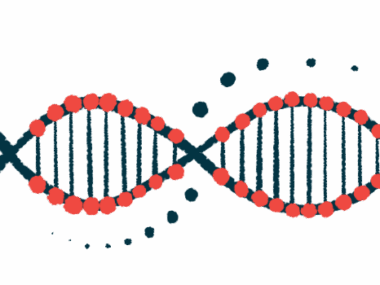Screening finds Fabry in adults with heart disease: Large-scale study
Researchers calls for routine screening in all adult LVH patients
Written by |

Almost 1% of adults in China with an unexplained thickened wall of the heart’s main pumping chamber, called left ventricular hypertrophy (LVH), were diagnosed with Fabry disease, a study involving nearly 1,000 patients shows.
“Our data advocate for routine screening for [Fabry] in all adult LVH patients,” the researchers wrote. The large-scale study, “Screening for Fabry disease in patients with left ventricular hypertrophy in China: A multicentre and prospective study,” was published in ESC Heart Failure.
Fabry is a rare, inherited disorder marked by the toxic buildup of a fat called globotriaosylceramide (Gb3 and lyso-Gb3) in cells. It’s caused by inherited mutations in the GLA gene that result in a deficiency of the alpha-Gal A enzyme, which breaks down Gb3. The heart, kidneys, blood vessels, and nervous system are the tissues primarily affected.
Heart involvement may lead to the enlargement of muscles on the left side of the heart, or LVH, which can affect up to 50% of men and a third of women with Fabry. Still, LVH is most commonly associated with high blood pressure, irregular heartbeats, heart valve problems, or diabetes, meaning Fabry disease may be overlooked as a possible cause.
“[Fabry] should be included in the list of differential diagnosis for patients presenting with LVH,” wrote researchers in China who examined the prevalence of Fabry in a large group of adults who presented with LVH at multiple clinical sites.
Prevalence of Fabry disease, LVH
The final screening population was made up of 906 LVH patients (65% men) who had an average age of 56.9. The extent of LVH was assessed using an echocardiogram of the heart. Fabry was assessed by measuring levels of alpha-Gal A enzyme activity and lyso-Gb3 in dried blood spots.
Along with LVH, most presented with at least one manifestation of heart problems, including high blood pressure (hypertension), coronary heart disease, type 2 diabetes, and a family history of hypertrophic cardiomyopathy, or a thickening of the heart muscle. About 1 in 5 patients (21.6%) had signs of kidney involvement.
Of the 906 patients, 43 (38 men, five women) had low levels of alpha-Gal A activity, and 21 (10 men, 11 women) showed elevated lyso-Gb3 levels. Among them, eight (seven men, one woman) were eventually diagnosed with Fabry based on genetic tests that found GLA mutations, resulting in a total prevalence of 0.88%.
All the patients diagnosed with Fabry had low alpha-Gal A activity and elevated lyso-Gb3 levels in dried blood spot samples. Most displayed non-heart symptoms, such as elevated protein in the urine (proteinuria). Three had typical nerve-related pain (shooting or burning pain), one reported diarrhea, and another was treated for a left ventricle blockage.
Fabry patients tended to have proteinuria or renal impairment over those without Fabry (75% vs. 21.2%). They also had a family history of hypertrophic cardiomyopathy (37.5% vs. 2.3%), nerve-related pain or numbness/tingling (37.5% vs. 4.4%), and lower mean blood pressure, either during a heartbeat (118.5 vs. 143.3 mmHg) and between heartbeats (73.2 vs. 86.2 mmHg), compared with those without the disease.
The researchers identified seven GLA mutations, five of which had previously been associated with Fabry.
A 50-year-old man with a mutation suspected to cause Fabry, called Asp313Val, showed a wider range of non-heart signs. This included proteinuria, kidney impairment — he had a kidney transplant at age 37 — nerve pain that started in early childhood, a history of stroke, and diminished sweating. Heart-related symptoms included chest tightness and shortness of breath without a history of high blood pressure, type 2 diabetes, or heart failure.
Genetic screening of patients’ families detected 14 additional cases of Fabry in four families. The average age of men with Fabry was lower than women (41.9 vs. 63.3 years). Men also had thicker ventricle walls on the backside, or posterior, of the heart compared with women.
“This pioneering screening study for [Fabry disease] among Chinese patients with unexplained LVH using [dried blood spots] measurement, revealed an [Fabry] detection rate of 0.88%,” the research team wrote. “Our findings confirmed that the combined measurement of lyso-Gb3 and [alpha]-Gal A activity is beneficial for primary screening of [Fabry] in patients with LVH.”





